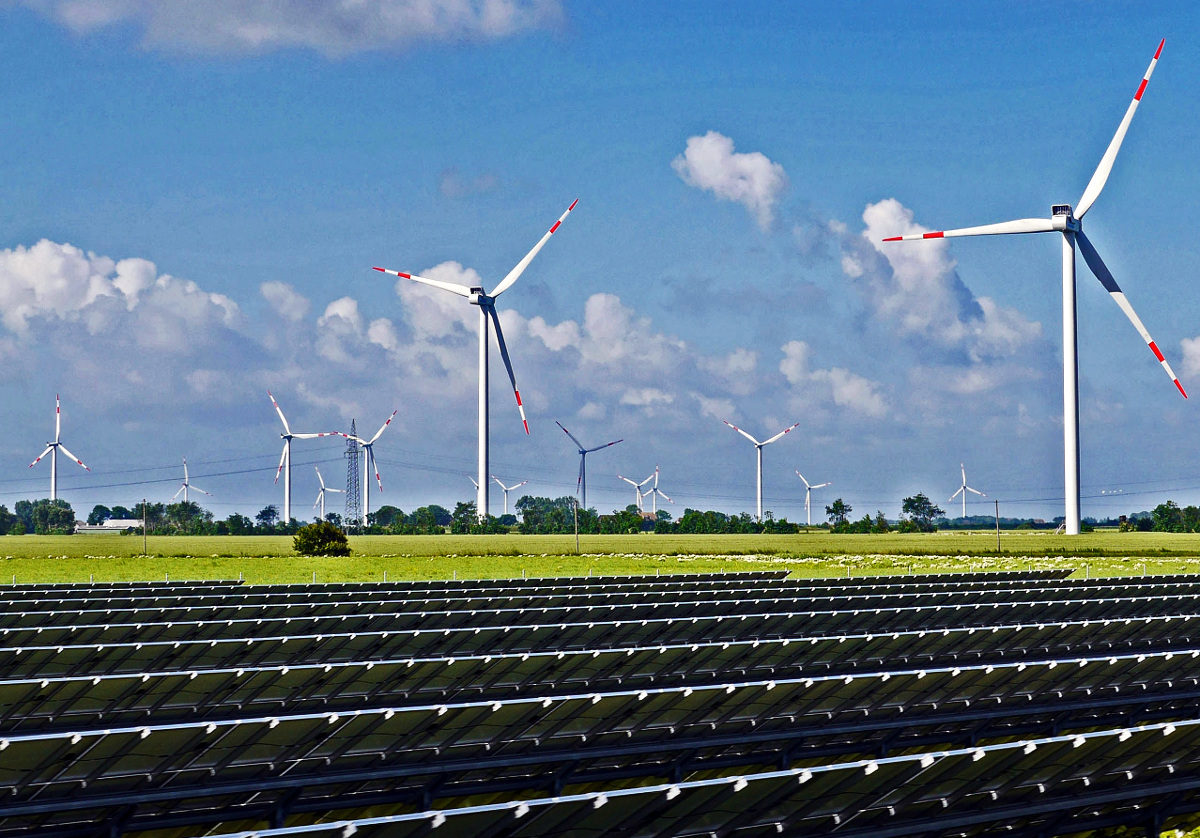The total wind-solar hybrid capacity in India could increase by almost 80 times from currently only 148 MW to 11.6 GW by 2023, according to a new report by the Institute for Energy Economics and Financial Analysis (Ieefa) and JMK Research.
The estimate is based on the tenders allotted under various central and state schemes. The Solar Energy Corporation of India (SECI) has so far tendered a total of 12,860 MW hybrid capacity (with and without storage), of which 4,290 MW has already been auctioned.
The report noted that combining wind and solar results in a capacity utilization factor of 35-50% compared to standalone solar’s 16-20% and standalone wind’s 20-26%.
Given the benefits of such systems, the government is now planning to hold renewable energy auctions for round-the-clock and hybrid projects instead of plain solar or wind tenders.
“There is a lot of interest in the potential of wind-solar hybrid generation to better manage the intermittency problem of standalone wind and solar and to make clean power more competitive against traditional thermal plants,” said report authors Vibhuti Garg, energy economist at the Ieefa, and Jyoti Gulia, founder of JMK Research.
“Wind-solar hybrid systems can produce more consistent power because solar power is produced during the day, while wind power is typically strongest at night. This inherent complementary nature of wind and solar power makes hybrid systems well-suited to meet energy demand.”
Besides upcoming capacity addition, the report examines tariffs, national and state policies, regulatory developments, and the challenges associated with wind-solar hybrid technology.
Tariffs
SECI tenders for wind-solar hybrid projects without storage have attracted low tariffs of INR2.67/kWh (US¢3.7/kWh), which are comparable to plain solar tariffs.
The report uses a financial model to project tariffs trends for a 250MW wind-solar hybrid project under different scenarios. It shows that when solar and wind are blended at a ratio of 80:20, the levelized tariff is INR 2.49/kWh (US¢3.32/kWh), while a 50:50 ratio results in a tariff of about INR 2.57/kWh (US¢3.43/kWh).
The levelized tariff increases substantially to INR 4.59/kWh (US¢6.12/kWh) when a two-hour battery back-up is added.
“Clearly, adding battery storage is not a feasible option at present because it significantly increases project costs and hence the tariffs,” said Garg and Gulia. “However, rapidly falling battery prices will make such an addition to these projects viable within a few years, further strengthening grid stability and reliability.”
The report highlights that much of India’s solar and wind power potential is concentrated in Gujarat, Tamil Nadu, Karnataka, Maharashtra and Rajasthan.
“Although wind and solar capacity can be at the same or different locations, co-locating reduces costs related to land, grid connection, hardware and other installation overheads. A co-located system costs 7-8% lower than a standalone solar system,” it stated.
This content is protected by copyright and may not be reused. If you want to cooperate with us and would like to reuse some of our content, please contact: editors@pv-magazine.com.









2 comments
By submitting this form you agree to pv magazine using your data for the purposes of publishing your comment.
Your personal data will only be disclosed or otherwise transmitted to third parties for the purposes of spam filtering or if this is necessary for technical maintenance of the website. Any other transfer to third parties will not take place unless this is justified on the basis of applicable data protection regulations or if pv magazine is legally obliged to do so.
You may revoke this consent at any time with effect for the future, in which case your personal data will be deleted immediately. Otherwise, your data will be deleted if pv magazine has processed your request or the purpose of data storage is fulfilled.
Further information on data privacy can be found in our Data Protection Policy.